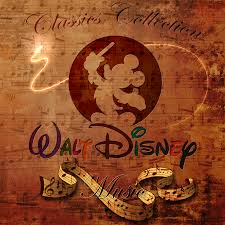Welcome to this first blog on my series about the music in Disney films! This first entry will focus on the main purpose of the series as well as the direction I want to go in with them.
The idea for me to do this series stems from a desire to carry on some form of academic writing following my music degree without the pressure of a deadline or an academic having to read through it and end up getting some form of grade! I just wanted to carry on some form of writing project after enjoying the writing of my dissertation, but in a more informal way that I could enjoy at a casual pace.
During my time at University I developed a love for film music, particularly researching the theory of it and writing long-form discussions about its different elements. I have also had a lifelong admiration for Disney animated films. I feel particularly fortunate to have been born at a good time to be a kid for Disney films with the 1990’s Disney ‘renascence’ already being in full swing by the time I was old enough to enjoy the films. The most notable of these films for me included The Little Mermaid (1989), Aladdin (1992), The Lion King (1994) and Hercules (1997) but I was also fortunate to have been introduced to a number of other ‘classics’ such as Pinocchio (1940) and The Jungle Book (1967).
There were of course other films created by Disney in which the music is of great significance such as Mary Poppins (1964) which I also grew up watching, and also animated films from other studios such as Prince of Egypt (1998) and pretty much every film produced by Pixar. However, for this series I decided to specifically focus in on Disney’s ‘classic’ animated film series, starting from Snow White and the Seven Dwarfs (1937) and ending with their most recent production Frozen (2013). This is because of the long-running nature of the film series and how much the style of both the music and film-making has changed and developed over the 77 years the studio has been releasing major animated feature films.
The films discussed won’t be done so in any particular order but I will only be writing about those I have seen so far (for obvious reasons). The following list is of those films that my wife and I either own or have seen:
- *Pinocchio
- *Fantasia
- *Dumbo
- *Bambi
- Cinderella
- Alice in Wonderland
- *Peter Pan
- *Lady and the Tramp
- Sleeping Beauty
- *One Hundred and One Dalmatians
- The Sword in the Stone
- The Aristocats
- *Robin Hood
- The Jungle Book
- **The Fox and the Hound
- *The Black Cauldron
- *Oliver and Company
- The Little Mermaid
- Beauty and the Beast
- Aladdin
- The Lion King
- Pocahontas
- *The Hunchback of Notre Dame
- Hercules
- Mulan
- Tarzan
- The Emperor’s New Groove
- *Atlantis: The Lost Empire
- *Lilo and Stitch
- *Treasure Planet
- *Brother Bear
- Bolt
- The Princess and the Frog
- Tangled
- Frozen
(* Seen but do not own ** Own but have not seen)
As you can see there is quite a list to get through, with many more that are not on the list (somehow?!)! If there are any that you would specifically like to hear about then please feel free to comment below and I will happily do my best. I hope you enjoy reading this series as much as I hope to enjoy writing it!



